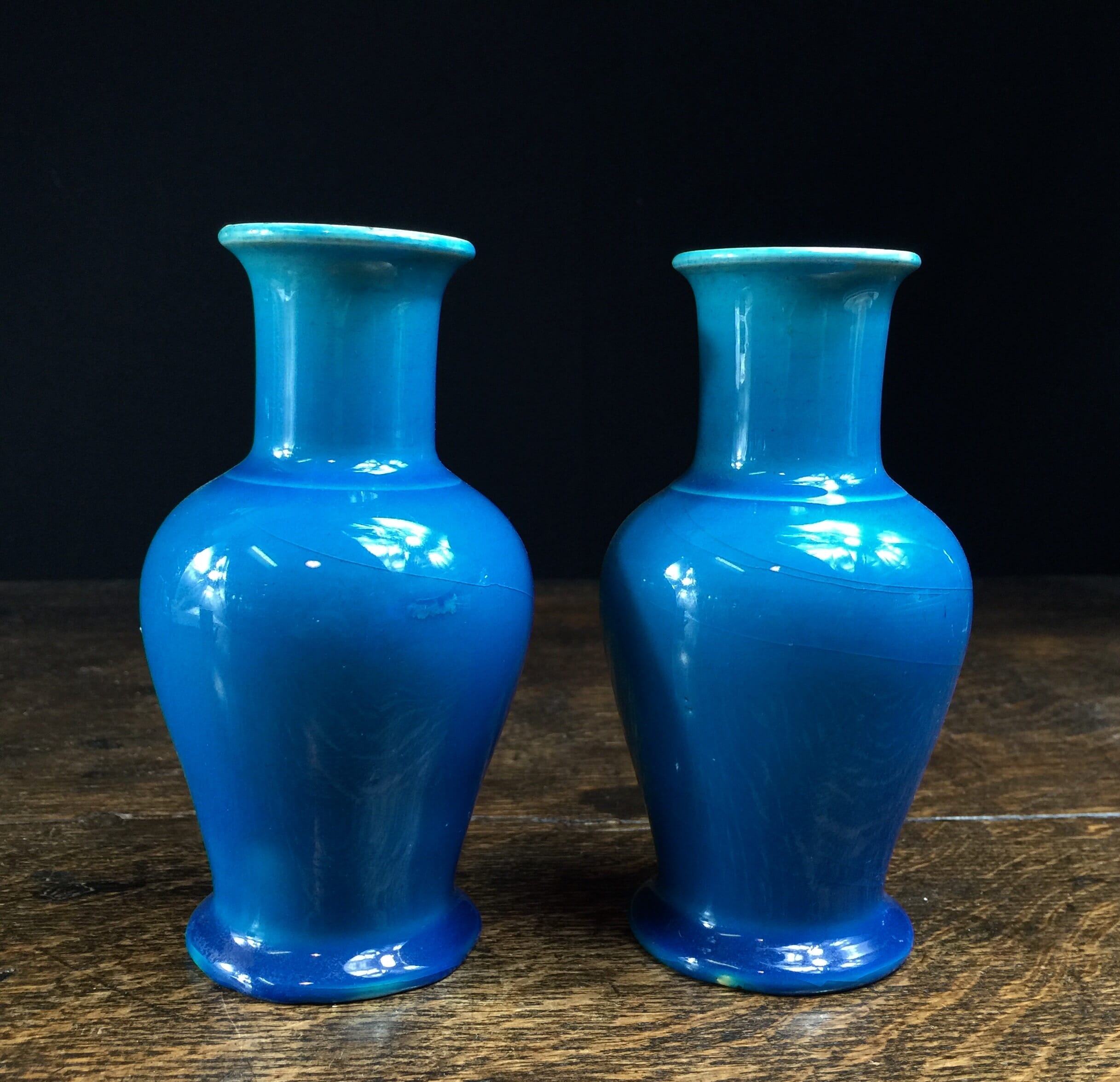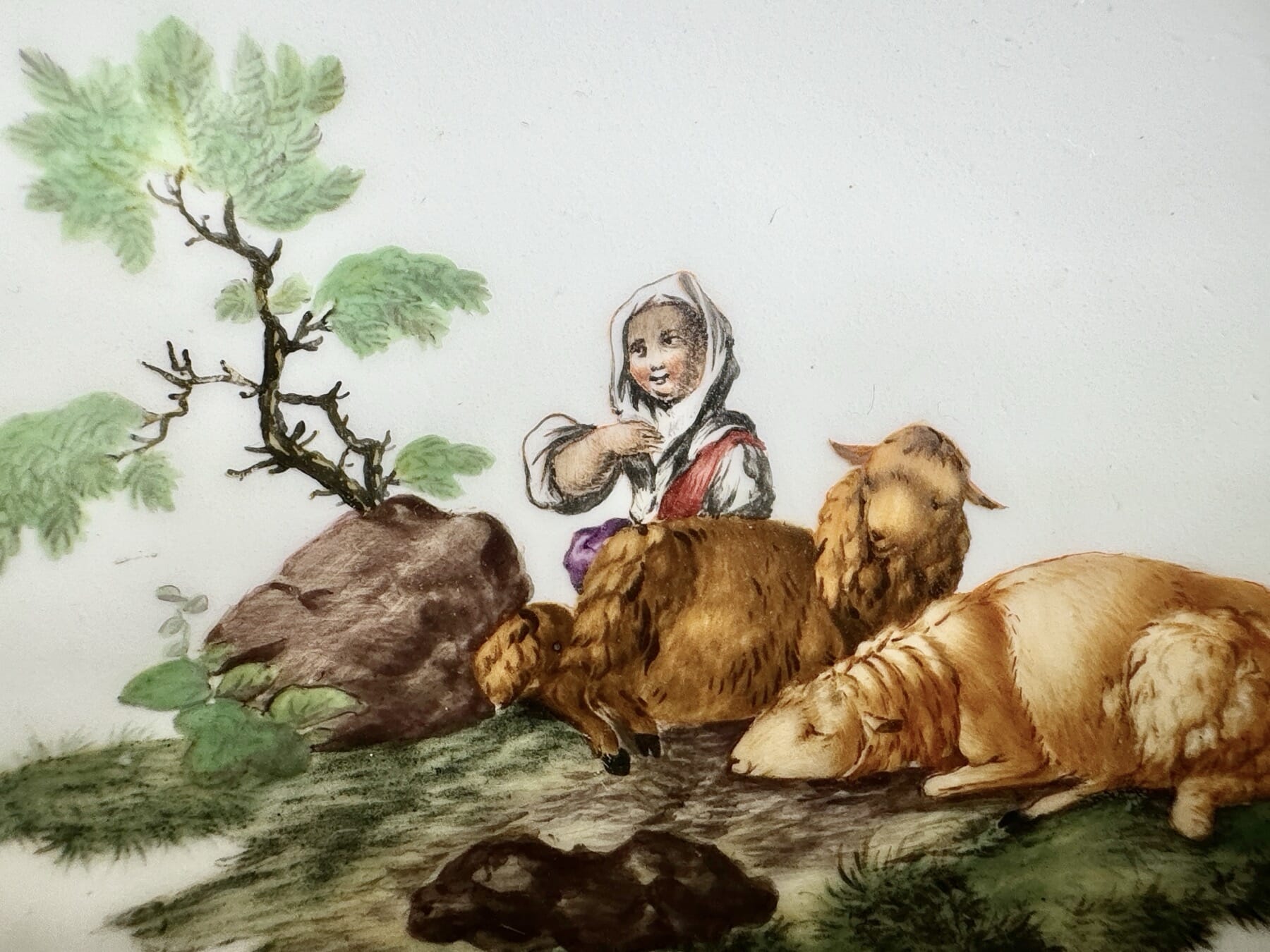Rare marked Drewry & Son milk jug, Chinoiserie print, c. 1825
Sold
English bone china milk jug, printed in red & painted in bright enamels with a Chinoiserie print known as the ‘Pavilion & Tower’ pattern, no. 65, depicting an Oriental Garden with large overhead flowering branches, a curious hybrid pavilion in the centre featuring a Gothic window understory, four classical columns, and a Chinese pagoda roof, flanked by two figures, a child with a flower on the left & a mother with a basket to the right, a remarkable tall pavilion beside her with multiple rounded domes to the tall roof, the rim with colourful flowerhead & flour-de-lis border, the handle with large flowerhead & leaves.
Red printed ‘D’ within a star cartouche, also painted ’65’ pattern number & ‘c’ in puce, for Thomas Drewry & Son, Lane End, Staffordshire.
Circa 1825
14cm spout-to-handle
Condition: some staining, surface crazed, no chips or cracks
Ref. Howard Davis ‘Polychrome Decoration on Staffordshire Porcelain’ p148 for the pattern on a plate.
Godden in his ‘Staffordshire Porcelain’ is the initial source of attribution, using the style of piece & pattern to date it to the 1820’s, and then refine it down to two possible makers with ‘D’ surnames. Drewry- also spelt Drewery – is the most likely of the two, in his opinion. They are recorded in the directories 1818, and disappear after the 1830 publication. Godden illustrates the London-shape teapot with the same pattern and ‘D’ mark on p415. Distinct to this maker (apparently not found elsewhere) is the plain handle form, without a spur on the inside towards the bottom; also distinct is the handle wrapping down the body and terminating by touching the actual foot of the jug.
Recorded by the Transferware Collector’s Club database as pattern #2552, titled ‘Pavilion & Tower’ ( no. 65) by Thomas Drewry & Son, Lane End, Staffordshire. A related pattern is their #3327, a pattern known as ‘Tea House’. In the documented example, there is a number next to the mark – as there is with this example & others of this pattern that have been recorded, all ’65’. Clearly this is the pattern number for this pattern, 65. The numbers on the ‘Tea House’ example are interpreted as ’44’, but seem to more likely be meant as ’77’ – just a few patterns along from this ‘Pavilion & Tower’ pattern in the long-lost factory pattern book. Comparing the two reveals a very close appearance.
| Condition | |
|---|---|
| Size | |
| References |
Sold - let us find you another










